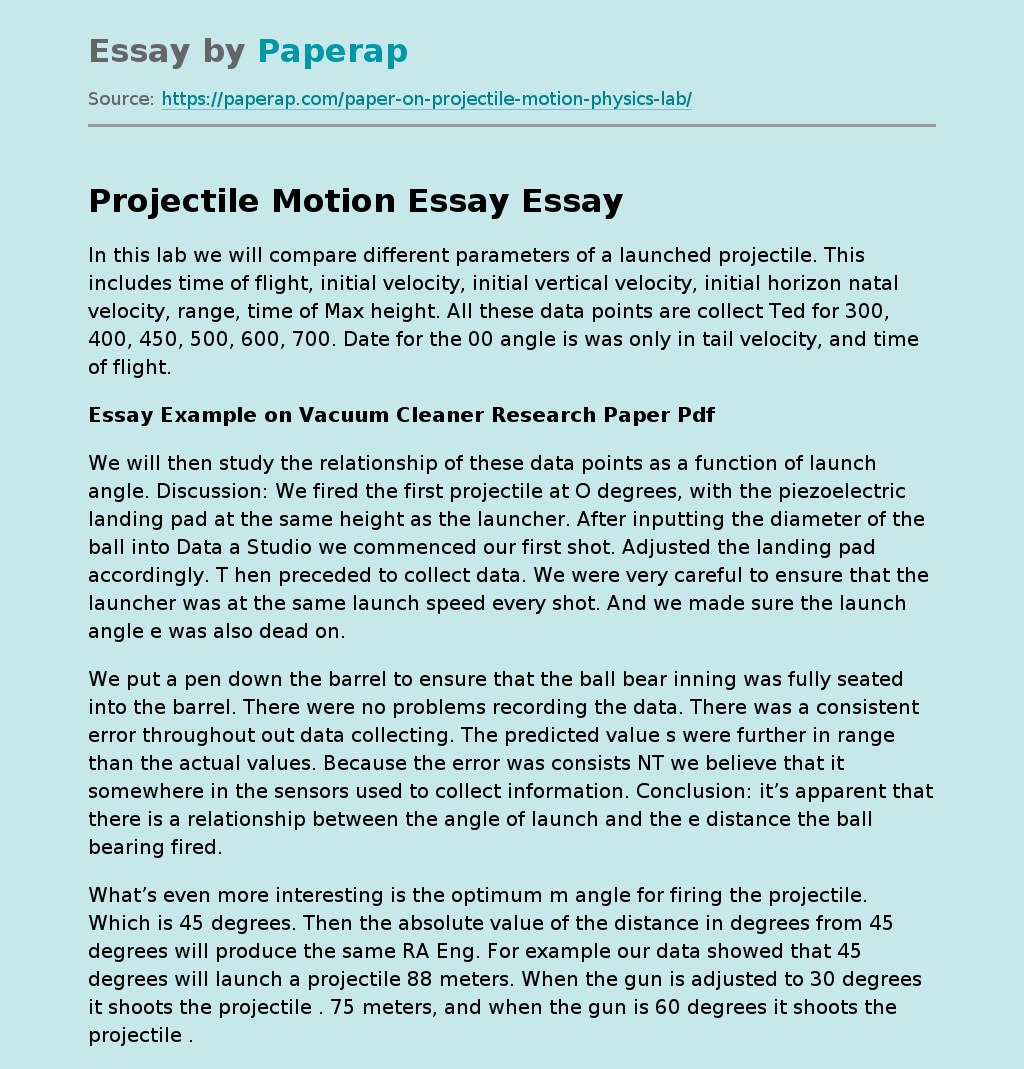Projectile Motion Essay
In this lab we will compare different parameters of a launched projectile. This includes time of flight, initial velocity, initial vertical velocity, initial horizon natal velocity, range, time of Max height. All these data points are collect Ted for 300, 400, 450, 500, 600, 700. Date for the 00 angle is was only in tail velocity, and time of flight.
Essay Example on Vacuum Cleaner Research Paper Pdf
We will then study the relationship of these data points as a function of launch angle. Discussion: We fired the first projectile at O degrees, with the piezoelectric landing pad at the same height as the launcher.
After inputting the diameter of the ball into Data a Studio we commenced our first shot. Adjusted the landing pad accordingly. T hen preceded to collect data. We were very careful to ensure that the launcher was at the same launch speed every shot. And we made sure the launch angle e was also dead on.
We put a pen down the barrel to ensure that the ball bear inning was fully seated into the barrel.
There were no problems recording the data. There was a consistent error throughout out data collecting. The predicted value s were further in range than the actual values. Because the error was consists NT we believe that it somewhere in the sensors used to collect information. Conclusion: it’s apparent that there is a relationship between the angle of launch and the e distance the ball bearing fired.
What’s even more interesting is the optimum m angle for firing the projectile.
Which is 45 degrees. Then the absolute value of the distance in degrees from 45 degrees will produce the same RA Eng. For example our data showed that 45 degrees will launch a projectile 88 meters. When the gun is adjusted to 30 degrees it shoots the projectile . 75 meters, and when the gun is 60 degrees it shoots the projectile .
Projectile Motion Essay. (2019, Nov 27). Retrieved from https://paperap.com/paper-on-projectile-motion-physics-lab/

